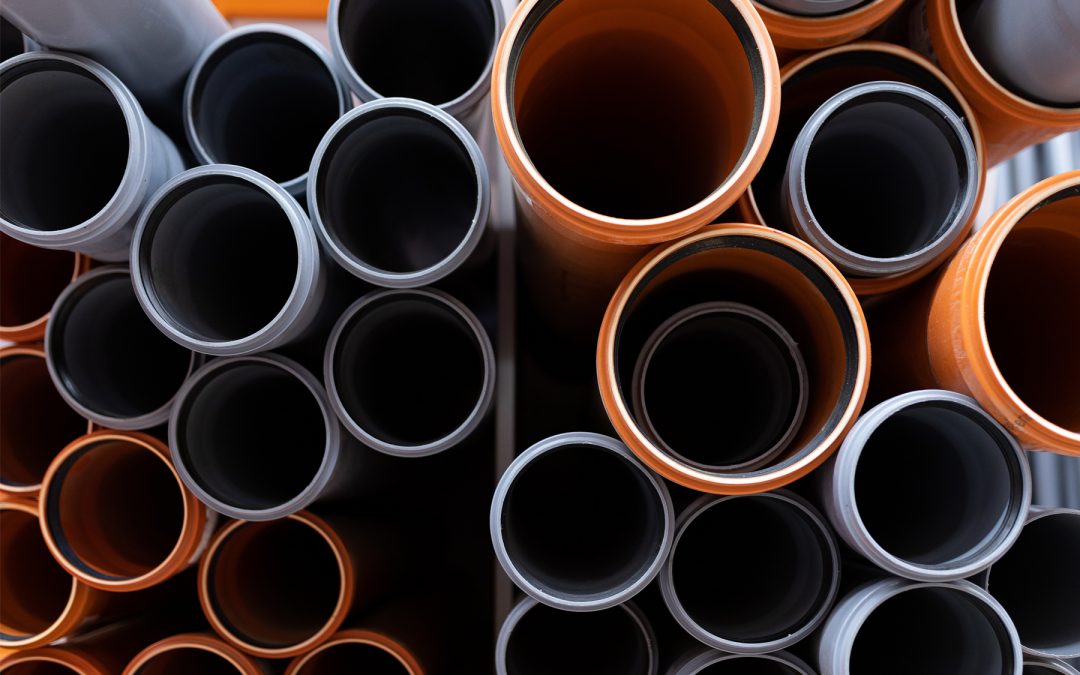Polyvinyl chloride (PVC) is practically everywhere. Inexpensive to produce and highly versatile, it has been employed in a host of everyday goods. Depending on the additives, or plasticizers, used in its manufacture, PVC can take either a rigid, sturdy form or that of a soft, pliable gel. You’ve seen it in construction materials like home siding and flooring, in medical supplies, in waterproof clothing, in packaging, and even in vinyl records.
Its utility, unfortunately, is matched by its toxicity. The most common plasticizer used in PVC production, phthalates, interfere with hormones that regulate thyroid activity, growth, and reproduction in mammals, including humans, when leached into the environment. The most common plastic recycling methods—melting it down so it can be molded into new products—generates hydrochloric acid that corrodes recycling equipment and presents safety hazards to workers. PVC takes centuries to biodegrade, and currently has a very low recycling rate in the United States.
A breakthrough from a U-M research team, recently published in Nature Chemistry, may redraw that bleak picture. Led by U-M postdoctoral fellow Danielle Fagnani and Anne McNeil, the Carol A. Fierke Collegiate Professor of Chemistry, the team pioneered a new technique that used electrolysis, rather than heat, to separate PVC’s carbon and chlorine bonds. This still releases hydrochloric acid, but at a measured, more controllable rate which allows it to be collected and used as a reagent to prepare molecules with numerous industrial applications, including pharmaceutical and agricultural uses.
Merely developing the technique will not solve the problems of widespread PVC waste. It has to be scaled up for practical use, and that means demonstrating its potential impact in the real world.

Left: The reaction vessel used to electrochemically recycle PVC in Fagnani’s experiments. Right: Pieces of PVC tubing from McNeil’s lab were used for the initial experiments to develop the recycling technology. Photos by Danielle Fagnani.
Life Cycles of the Plastic and Recyclable
As Fagnani and McNeil closed in on their novel recycling process, McNeil reached out to fellow faculty member and past collaborator Jose Alfaro (Ph.D. ’14), an associate professor of practice in the U-M School for Environment and Sustainability, for help understanding the environmental impact of their discovery. He, in turn, asked Rackham alumna Sofia Camarero (M.S. ’22), then a student in his lab, to conduct a life cycle assessment (LCA) on the new approach to recycling PVC.
“An LCA is an exploration of what happens over the life of a product, from production to disposal,” Camarero explains. “We looked at where the materials for PVC come from and the emissions embodied in those materials—how they’re transformed, distributed, and used—and finally what happens when it becomes waste.”
Using existing industrial databases, Camarero was able to assemble a complete picture of the emissions and toxins generated not only by PVC production and use, but also of the production of hydrochloric acid by conventional means. She then ran a similar assessment using information on the materials, emissions, and energy use from Fagnani and McNeil’s experimental technique, and compared the results.
“This project was an opportunity to apply some of the skills I learned as a graduate student and collaborate with other talented scientists to have an impact.”
Camarero’s analysis found the new technique reduced the emissions of hydrochloric acid production by 71 percent, in addition to benefits of safely removing one of PVC’s most problematic components and preventing it from spending hundreds of years in a landfill.
“When you’re developing a technology at this early stage, when it’s just in laboratory experiments, it can be hard to communicate its impact from the lab results alone,” Camarero explains. “Through this life cycle assessment, we were able to envision how this technology could be scaled, and how it could benefit our environment.”
In addition to its scientific and environmental benefits, the project, Camarero says, helped her become a better scientist. As her first journal publication, the project gave her invaluable firsthand insight into the publication and peer review process, something she hopes to apply to publishing her master’s thesis on biomass gasification. She also learned how to better collaborate with teams from different fields and departments that otherwise do not often interact, a valuable skill in her career since earning her degree.
She and Alfaro have co-founded a startup to commercialize biomass gasification technology —a process that converts agricultural waste into sustainable energy and fertilizing biochar—to help coffee and pineapple growers improve both the productivity and sustainability of their operations.
“This project was an opportunity to apply some of the skills I learned as a graduate student and collaborate with other talented scientists to have an impact,” she says. “I feel really proud and thankful for the opportunity to collaborate on this. It’s a great example of how different research teams can come together to create a well-rounded research project.”
How Rackham Helps
Camarero is the recipient of a Rackham Conference Travel Grant, which enabled her to attend the 2022 Gordon Research Seminar in Industrial Ecology in Newry, Maine, where she presented her thesis research.

